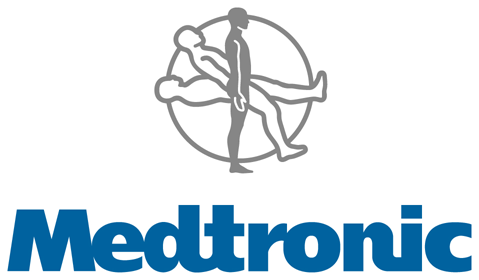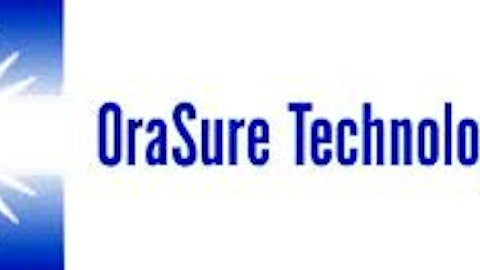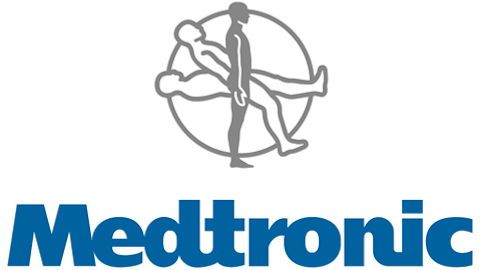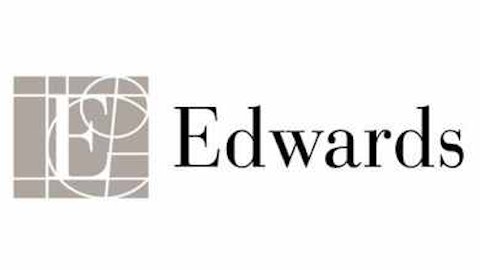The global medical devices market reached $331 billion in 2012 according to Kalorama Information, just 3% higher than 2011.
In the U.S. Medicare, Medicaid as well as state governments implemented anemic spending increases to hospitals, the key buyers of medical device products.
While many of the big-time medical device companies are forecasting sunny earnings for 2013, that hasn’t slowed down the march to trim payroll, according to Fierce MedicalDevices.
In this article, I will give you four investment opportunities in the medical devices industry that could be great investments going forward.
The candidates
The first one is Medtronic, Inc. (NYSE:MDT).
Medtronic posted fiscal fourth-quarter results that showed better-than-expected recovery in cardiac rhythm management and spinal devices — the two key product lines that have dragged down growth for Medtronic over the last few years.
With its diversified portfolio and strategy to develop products for a wide range of chronic diseases, Medtronic, Inc. (NYSE:MDT) is well positioned to take advantage of new trends in disease management. While several of Medtronic’s key markets have experienced slowing growth (including implantable cardioverter defibrillators and spinal procedures), the firm has remained focused on its fundamental strategy of innovation.
It is often first to market with new products. For instance, Medtronic, Inc. (NYSE:MDT) reached the U.S. market first with its Revo MRI-compatible pacemaker in 2011, and followed up with its next-generation pacemaker this year.
Medtronic is the largest medical equipment maker and holds market-leading positions in spinal products, insulin pumps, and neuromodulators for chronic pain. The company has taken bold steps to purchase emerging technology to treat atrial fibrillation, transcatheter heart valves, and treatment-resistant hypertension. If these new therapies prove effective, Medtronic, Inc. (NYSE:MDT) could dominate three more potentially large markets.
With financial leverage at a low 1.9 and plenty of free cash flow to repay its obligations, Medtronic remains in healthy financial condition. The estimation is that the company could generate more than $3.7 billion in free cash flow in fiscal 2014.
Merit Medical Systems, Inc. (NASDAQ:MMSI)
Merit Medical Systems is a company engaged in the development, manufacture, and distribution of proprietary disposable medical devices used in interventional and diagnostic procedures, particularly in cardiology, radiology, and endoscopy.
Merit’s Q1 results were lower than expected. The results missed on all counts despite a 9% rise in total sales.
The company is in the process of reducing expenses and improve profitability, but this will take some time before fruition. Its early disappointments with Thomas Medical was related to the unanticipated loss of a key customer, the company already adjusted the production headcount to align demand with capacity.
Merit’s new product pipeline is robust. Merit introduced the basixTOUCH(TM) inflation device in Europe. This product reinforces the company’s leadership position in this market segment and is expected to be the largest single revenue producing product in Merit’s history. With the launch of the Bearing(TM) nsPVA embolization particle, the company added a valuable component to their embolic portfolio. The Endotek division reached profitability for the first time this quarter and is expected to continue to gain earnings momentum.
Merit Medical Systems, Inc. (NASDAQ:MMSI) is a very interesting company that has a lot of potential. The company’s basixTOUCH(TM) inflation device will be the money maker going forward.
Vascular Solutions, Inc. (NASDAQ:VASC)
Vascular Solutions is a medical device company that focuses on developing clinical solutions for coronary and peripheral vascular procedures.
The company’s first-quarter results were better than expected on the EPS front. Net revenue was a little bit lower than expected. Net revenue came in at $26.1 million. The company’s revenue guidance range for the quarter was $26 million to $27 million. U.S. product sales increased 10% to $21.9 million compared to $19.9 million in the year-ago first quarter, while international product sales increased 9% to $4.1 million compared to $3.8 million in the year-ago first quarter.
Adjusted EPS in the first quarter was $0.16, an increase of 33% from $0.12 in the first quarter of 2012. On a GAAP basis, including the costs associated with the Guardian product recall, EPS in the first quarter of 2013 was $0.13. The company’s guidance called for first-quarter EPS of between $0.15 and $0.16.
The company is maintaining guidance for net revenue of between $106 million and $110 million. The strong pipeline of internally-developed new products in development could pay off going forward. Small acquisitions or alliances will do the rest.
The last company I like is Unilife Corp (NASDAQ:UNIS).
Unilife is a U.S.-based developer and commercial supplier of injectable drug delivery systems. Unilife’s broad portfolio of proprietary device technologies includes pre-filled syringes with automatic needle retraction, drug reconstitution delivery systems, auto-injectors, wearable injectors, and targeted delivery systems. Each of these innovative and highly differentiated device platforms can be customized by Unilife Corp (NASDAQ:UNIS) to address specific customer, drug, and patient requirements.
Unilife’s third-quarter results were better than expected.
The company is still loss-making, but the future looks very bright. In April, Unilife Corp (NASDAQ:UNIS) signed a 15-year customization and commercial supply contract with an unknown U.S. pharmaceutical company for the EZMi dual-chamber syringe. This contract is expected to generate up to $110 million in cumulative revenue from customization programs, production scale-up, device sales, and a royalty from net drug sales.
In April, Unilife Corp (NASDAQ:UNIS) agreed to preliminary terms with a leading U.S. life science financing firm for a debt funding program that is expected to be finalized at the end of this month. Combined with the anticipated revenue to be generated from new and existing customer agreements, this medium-term debt program is expected to strengthen the company’s balance sheet and minimize potential dilution to existing shareholders.
Investors are waiting patiently for the announced contracts to kick in. The stock price has already reacted accordingly. From $1.85 on May 9 to $3.82 on May 24.
A very upbeat story that has pleased investors so far. Let’s see what happens going forward.
Final note
The challenge for medical device companies is going to be coming up with devices that both have a healthcare benefit but also a demonstrable a cost lowering effect. Promising technologies for the coming years include innovations that address chronic diseases, improve diagnosis, treat conditions less invasively, reduce patients’ dependence on drugs, and many more emerging technologies. I think the four companies mentioned above are a great start for investors looking for exposure in this sector.
Johan Seijkens has no position in any stocks mentioned. The Motley Fool owns shares of Medtronic.
The article The Medical Device Industry Offers Opportunities originally appeared on Fool.com.
Copyright © 1995 – 2013 The Motley Fool, LLC. All rights reserved. The Motley Fool has a disclosure policy.



